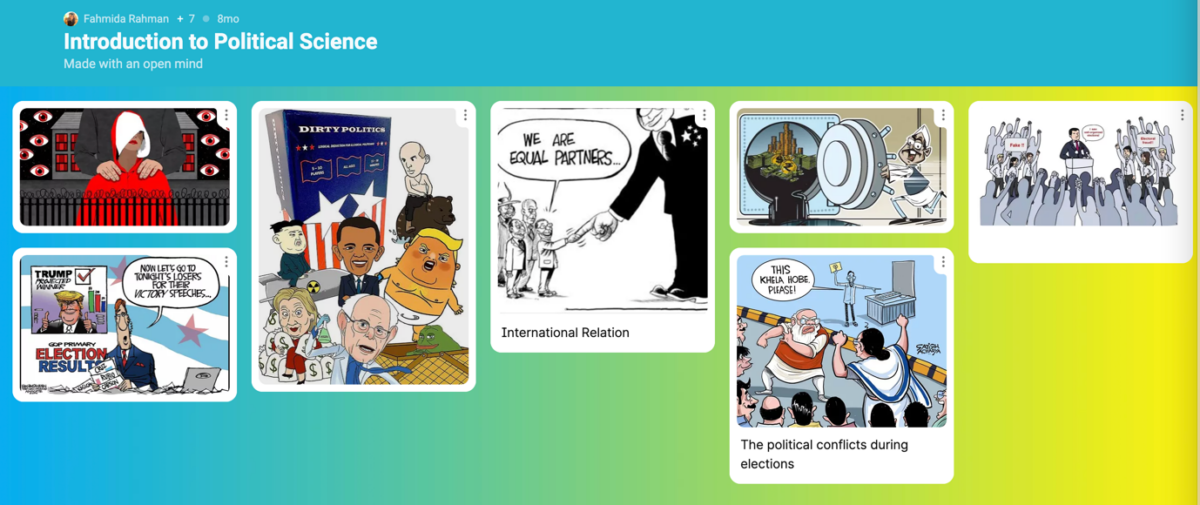My Introduction to Political Science class usually has thirty-five students, a size that was never challenging when teaching in person. However, since the pandemic began, conducting this same class with the same number of students online proved to be a very different experience. I was particularly apprehensive about student engagement since I was new to online learning and looking at boxes with initials or small pictures on my zoom screen was miserable in comparison to being in a room with students. On Zoom I could barely understand if my students were listening or understanding the contents I was teaching. This was never the situation when teaching in person. Regular tasks like explaining the assigned articles were much easier in person, I could tell by their expressions if they understood and nobody stayed silent in class. I miss the chaos, arguments and debates that my students engaged in.
The first quiz I assigned last Summer (online) was a reflection paper on “War Making and State Making as Organized Crime” by Charles Tilly. While I was correcting the papers. I felt like pulling all my hair out. Reading their answers I could tell that they only paraphrased the main article without writing any reflections or making any observations of their own. After receiving feedback on the course from the students, it was evident that they had lost interest in reading and just wanted to complete their semesters. They were least interested in listening to lectures online and most of the time they kept their camera off, microphone muted. I knew I had to start searching for ways to help students find online classes interesting too. There were numerous blended learning tools that I learned about; each was more exciting than the others. I knew I had to choose the right one for my Political Science class and Padlet was one of the tools.
The first time I opened the Padlet with my students and showed them how it worked, they were all in awe. Most of them were glad to know that their names would stay anonymous when they posted anything. I have been using Padlet for a year to conduct various small tasks for students and it’s amazing to see how promising their answers were. On the first day of every semester, I ask my students to post picture(s) of what comes to their mind when they first hear the word “politics”. After seeing their pictures, I leave a couple of minutes for them to write three to four lines on the picture(s) they posted and how they think it is connected with politics. Through this task the first content I cover is “How does political decision affect our personal lives?” Padlet proved to be an engaging tool for online learning and I plan to keep using the platform when we return to in-person classes because it offers a richer way to engage when students can see and/or read each other’s posts on politics.
It was not difficult for the students to grasp the idea of ice breaking through the Padlet. The most interesting part of my course is that every semester I hear all the new students getting excited about their first day at my class. I realised that they were already aware of my ice breaking and they did research prior to the class on all the interesting images they can find on politics. In an online session this ice breaking is important because this tool is engaging for students and allows them to express their opinions on the first day. A proper ice breaking session through Padlet eases the students to engage more in their other classes too.
